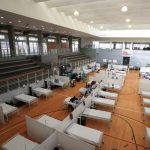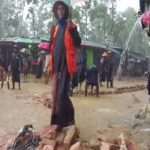South Sudan is currently having to deal with the current influx of refugees, as tens of thousands of people flee the war between Sudan’s military and a rival militia, which has killed at least 863 civilians.
A 7-day ceasefire was agreed last Monday
Many took the opportunity to head to the border with the world’s youngest nation.
A South Sudanese, Alwel Ngok formally living in the capital, Khartoum with her family before the violence erupted said many fled and now don’t understand what is going on and if their problems will be solved even as the rains are expected.
Many are hungry and without plastic sheets.
Aid agencies are struggling to cope with the influx of people. Even before this crisis, 70% of the population in Sudan needed humanitarian assistance.
They are tremendously thirsty, extremely hungry, and incredibly exhausted. “They need help, they need food, they need water, they need health care, they need everything,” said Mary Otwong, a UN International Organization for Migration border monitor.
United Nations World Food Program regional director for East Africa, Michael Dunford, added:
“My biggest concern is the implications that this crisis in Sudan will have across the region, particularly in South Sudan.
Even before this crisis, 70% of the population needed humanitarian assistance and at the moment WFP can’t meet their needs, we’re going to struggle to meet any increased needs at this stage”.
On Friday, Sudan’s army appealed for reservists and retired soldiers to re-enlist and asked the United Nations to change its envoy to the country.













